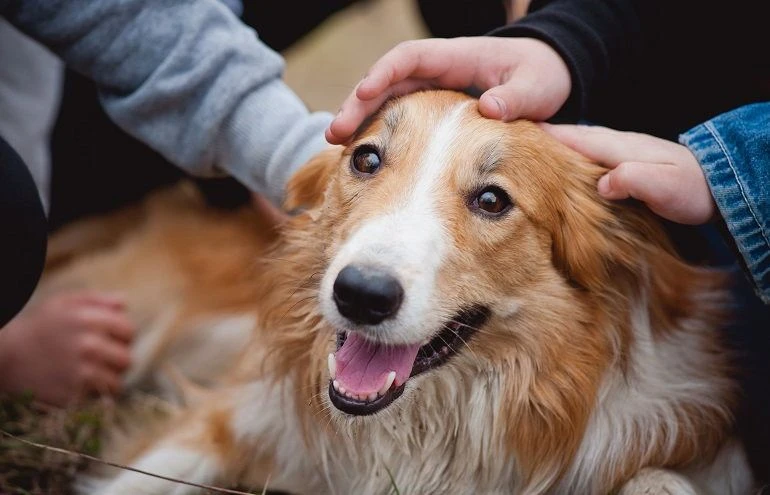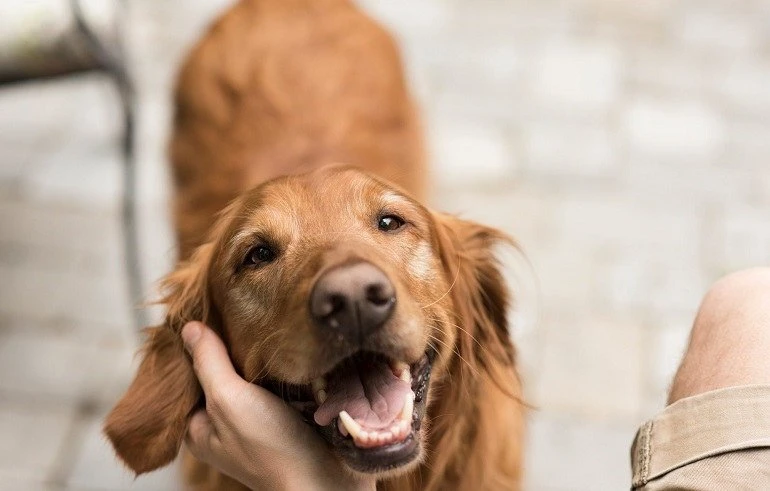Why Do Dogs Like To Be Petted?
by Tom Ken
It is natural for dog parents to pet them as they all assume the pup loves petting. Even when most people meet dogs for the first time, the typical interaction is always petting them. However, do dogs like being petted? The simple answer is yes, and here is why.
Do Dogs Like to be Petted?

Dogs Prefer Petting to Verbal Praise
A research published on Behavioral Process , a leading online journal, concludes that dogs love petting more than other forms of praise, such as showering it with positive words. The research was conducted on 42 dogs from both shelters and homes.
In the study, the dogs interacted with two people in a room. One of the people petted the pets while the other praised them with words. The results concluded that the dog preferred to spend more time with the individual petting them and showed little interests in the person praising them verbally.
Petting Soothes Dogs
According to WebM D, petting dogs acts as a stress soother for both the pet and its parent. Petting helps by lowering blood pressure and encouraging the release of relaxation hormones. Also, it can significantly cut down the levels of stress hormone.
Where Should You Pet a Dog?

Although most dogs love petting, you have to do it properly, which means you should know where to touch them. Here are some of the best places to pet your pup.
- The Upper Chest: Rubbing the upper chest soothes and comforts the dog and when it is chilly can also help warm up the pooch.
- The Hips and Butt Area: The hips and butt area are easily accessible, and many dogs do not have any problem with people touching them. Petting this area also tends to be more playful, and the pet shows this by wiggling its tail with excitement.
- The Ears: Before petting the dog on the ears, you need to make sure it is comfortable with this as some might not like you touching any part of the face.
- The Belly: If there is a sweet spot for petting dogs, the belly is a top contender. Pups love belly petting, and most even roll over to give you better access.
- Under the Chin: When cuddling the dog or it is sitting next to you, under the chin is one of the best places to pet. However, like the ears, you should make sure the pet is comfortable with this as some might not like you touching their chin.
- The Shoulder and Back: A dog's shoulder and back are a safe bet when it comes to petting as it might not be the most exciting place to pet, but most do not have an issue with this.
How to Pet a Dog

Although each dog is unique and hence might want to be petted in a certain way, some specific aspects of petting can help you build great rapport with the pup. Here are a few pointers on how to pet a dog
- Let the Dog Take the Lead: It is vital always to follow the pet's lead and not just do it your way. Ensure you do not touch then pet where it does not want or do it when not in the mood. Most dogs will initiate petting through contact when it is in the mood.
- Do Not Hover: When trying to pet your pup, avoid hovering as much as possible. Most dogs perceive hovering around them to be a threat, and some can get aggressive while others will want to escape.
- Identify the Right Petting Spot: Just like a dog will make it clear it wants to be petted, it also gives you a lead on where you should touch. As you pet, watch for its reaction when touching different spots to determine where it enjoys most.
- Make the Right Movements: A slow, repetitive movement is vital when petting dogs as it makes things more enjoyable. What's more, try to give the pup a gentle massage and light scratching as this is very calming. Moving your fingers in the same direction as the fur can also be very therapeutic.
Tips to Ensure Optimal Pet Pleasure
- Avoid overstimulation by keeping the petting slow and gentle
- Try to read the dog and adjust the pressure to its liking
- Ensure the pet is lying or sitting in a comfortable position when petting
- Watch the pet as you are petting and stop when you notice undesirable behavior
- Always work on different spots and not just on one part of the body
Conclusion
Dogs enjoy petting far much more than other kinds of rewards, such as verbal praise. Petting also provides a good time for the pet and parent to bond and effectively relieves stress in dogs. But, as much as most dogs love it, you have to ensure you do it properly and touch the right spots.
 |
 |
 |
 |

About Tom Ken
Tom has worked with many veterinary surgeons as a nurse at different veterinary clinics throughout his life.
There, he provides care for sick animals; such as: dogs, cats, rabbits, birds, hamsters, guinea pigs, and sometimes reptiles.
He has good work ethics and gentle hands; hence, the doctors as well the pet owners have come to love his presence alot.
With this site, he aims to help the readers ensure their pets' wellbeing, learn how to care, and proivide medical treatment as needed.
Joshua received Veterinary Technician Degree at Purdue University in West Lafayette, IN.
Thoughts on "Why Do Dogs Like To Be Petted?"
 |
 |
 |
 |
Pet Care Tips
You can Get FREE Gifts. Furthermore, Free Items here. Disable Ad Blocker to receive them all.
Once done, hit anything below
 |
 |
 |
 |